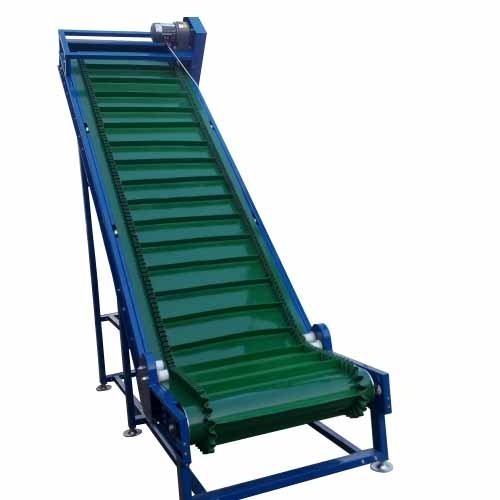

| Material | Mild Steel (MS) |
| Type of Belt Conveyor | Inclined Belt Conveyor |
| Load Capacity | Upto 200 kg |
| Height Of Conveyor | 10 feer |
| Operating Speed | 50 |
Pulleys:
These are cylindrical structures located at both ends of the conveyor and help drive and guide the belt. The pulley at the loading end is called the head pulley, while the one at the unloading end is known as the tail pulley.
Drive mechanism:
The drive mechanism powers the conveyor and is typically located at the head pulley. It can consist of an electric motor, gearbox, and coupling or other power transmission devices.
Support structure:
Inclined belt conveyors require a sturdy support structure to maintain stability and alignment. This structure may include beams, frames, or trusses depending on the specific design and load requirements.
Idlers:
Idlers are rollers or sets of rollers placed along the conveyor’s length to support the belt and maintain its proper alignment. They reduce friction and help prevent the belt from sagging or misaligning.
Cleats or sidewalls:
In some cases, the belt may be equipped with cleats or sidewalls to prevent materials from slipping or sliding off the conveyor during inclined transport.
Safety features:
Inclined belt conveyors should incorporate safety features such as emergency stop buttons, guardrails, and sensors to detect any faults or obstructions that could cause accidents or damage to the system.
©2024 – 2025 Innovative System.